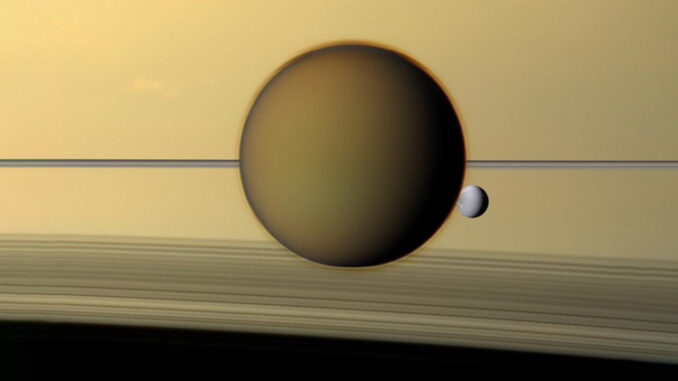
Saturn is the new “moon king” among the planets in our solar system. Moons are natural satellites that travel around another object in space. They are not planets because they do not orbit the Sun. Instead, moons travel in orbits around a host planet. Saturn had recently lost its title of “moon king” to Jupiter after twelve new moons were added to Jupiter’s eighty-three known satellites. Since then, Saturn has reclaimed its top-ranking status with the discovery of sixty-two additional moons. Saturn now has a total of one hundred forty-five known moons. Earth has only one moon. Some planets do not have any moons.
A research team discovered Saturn’s moons using three years of data from an advanced telescope. Scientists say the newly discovered satellites are irregular moons. Irregular moons follow distant orbits around their host planet. In this case, the host planet is Saturn. The moons follow an elliptical orbit around the planet and its rings. Irregular moons are classified into groups according to their orbits. The Gallic and Inuit moon groups orbit Saturn in the same direction that Saturn rotates. The group with the largest number of moons is the Norse group. Norse moons travel in the opposite direction of Saturn’s rotation. All of the newly discovered moons belong to one of these three groups. The smallest of the newly detected moons is just 1.6 miles wide. Saturn’s largest moon, Titan, has a diameter of 3,200 miles. That is about the width of the United States! Researchers believe the small moons in Saturn’s moon groups may all be from a larger parent moon that broke apart millions of years ago. The ringed planet, Saturn, is the first and only planet in our solar system to have more than one hundred moons!
What Do You Think? What can scientists learn from the discovery of new moons in our solar system?
Photo Credit: NASA/JPL-Caltech/Space Science Institute



